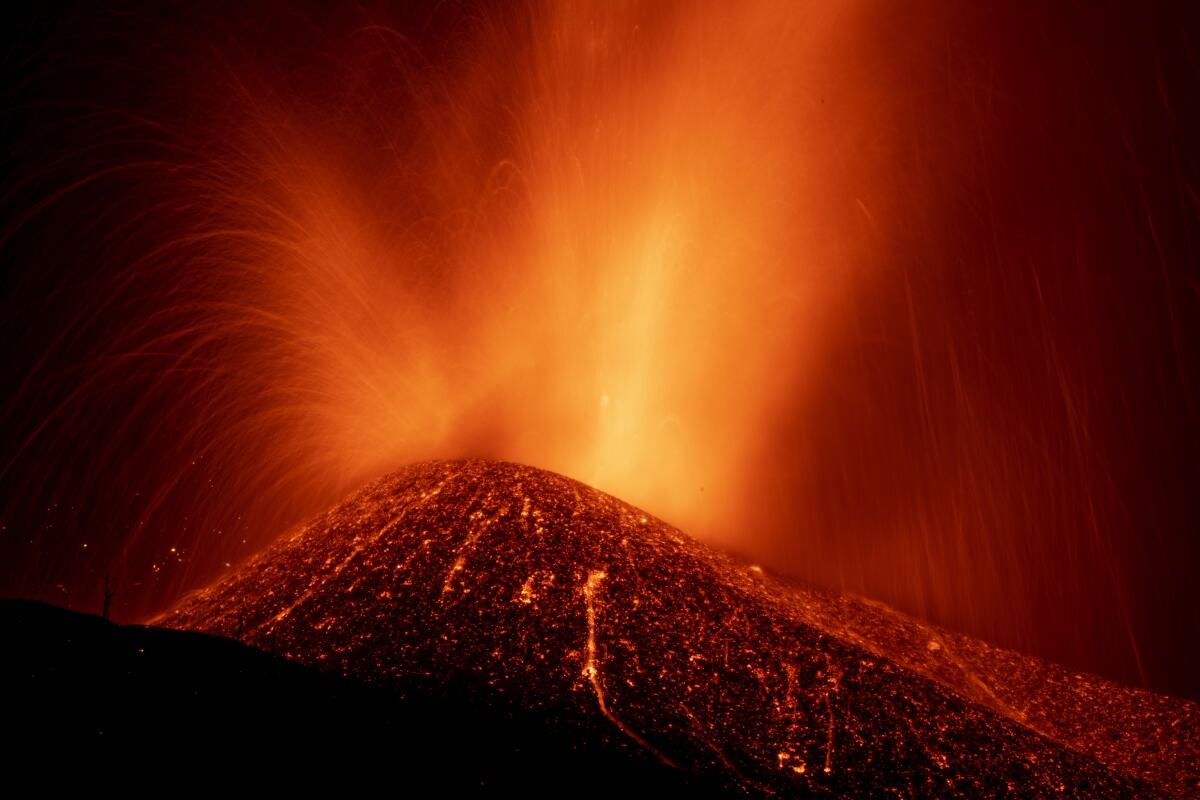Lava flow slows on Spain’s Canary Islands after volcanic eruption

- Share via
TODOQUE, Canary Islands — The advance of lava from a volcanic eruption in Spain’s Canary Islands has slowed significantly, raising doubts Thursday about whether it will fan out across the land and destroy more homes instead of flowing into the sea.
A giant river of lava slowed to 13 feet per hour after reaching a plain on Wednesday. On Monday, a day after the eruption on the island of La Palma, it was moving at 2,300 feet per hour.
As it slowed, the lava grew thicker. In places, it rose up to 50 feet high, authorities said. The lava now covers 410 acres and has swallowed around 350 homes.
The lava’s slowing pace bought time for more residents of towns in its path to retrieve belongings, with the Guardia Civil police force escorting them to their homes in Todoque, close to the coast, on Thursday morning.
The Guardia Civil said seismic activity in the area, which surged before the eruption and has remained strong, has stabilized.
Molten lava, ash and smoke continued to pour from the volcano’s mouth, shooting up to nearly 14,000 feet high, the Canary Islands Volcanology Institute said. That raised concerns about whether airspace above the island could remain open.
ENAIRE, which manages Spain’s airspace, said two no-fly zones are being declared above the affected area to allow emergency services to operate freely. Some flights into and out of La Palma were delayed early Thursday.
The Emergency Military Unit deployed on the island said the readings it has taken of the air found no threat to health.
Authorities haven’t reported any casualties from the eruption, though damage to property, infrastructure and farmland is expected to be significant.
Scientists were monitoring the volcano activity and had warned of a possible eruption. That allowed almost 7,000 people to be evacuated in time.
Officials had initially expressed fears about what would happen when the lava reached the Atlantic Ocean. The lava, whose temperature exceeds more than 1,800 degrees, could cause explosions, trigger landslides and produce clouds of toxic gas when it hits the ocean, experts say.
The eruption and its aftermath could last for up to almost three months, according to the Volcanology Institute.
Spain’s king and queen, and the Spanish prime minister, were due to visit the area Thursday.
Life on the rest of La Palma, which is roughly 22 miles long and 12 miles wide at its broadest point, has been largely unaffected, with tourists landing for previously scheduled vacations.
The Canary Islands are a popular destination for European tourists due to their mild year-round climate.
More to Read
Sign up for Essential California
The most important California stories and recommendations in your inbox every morning.
You may occasionally receive promotional content from the Los Angeles Times.













